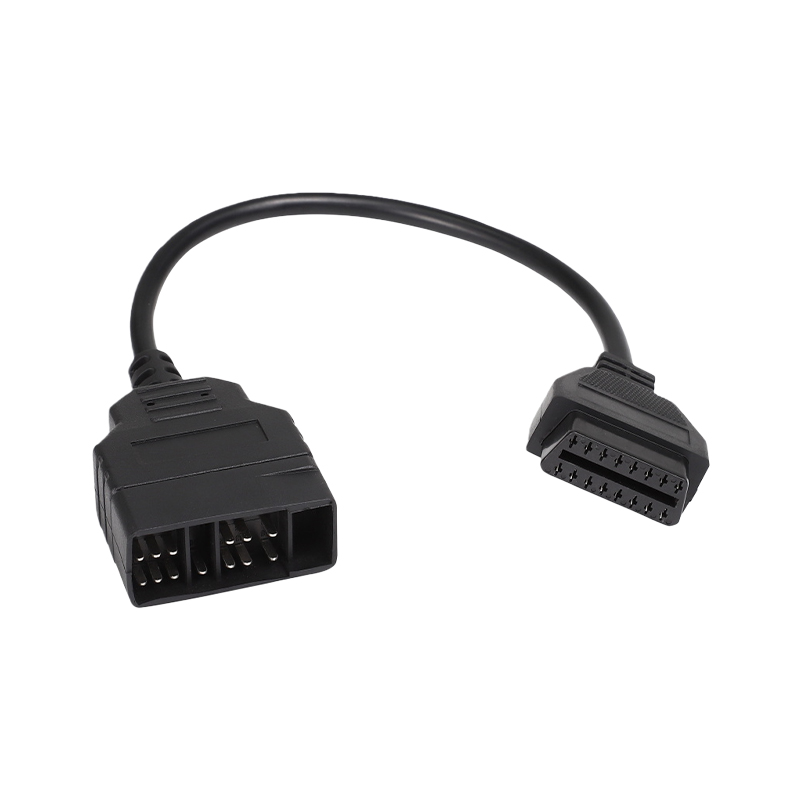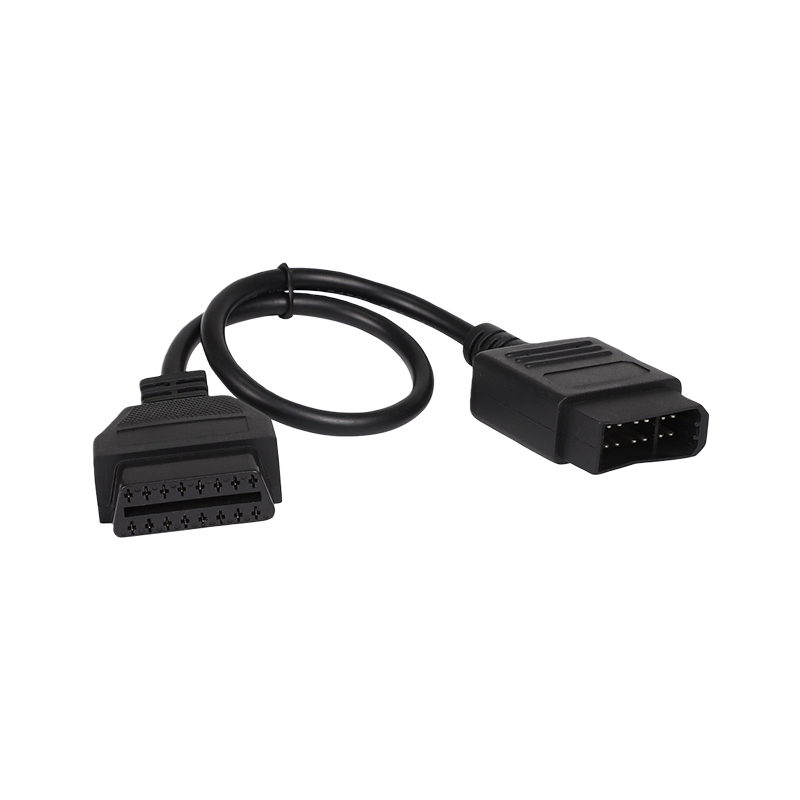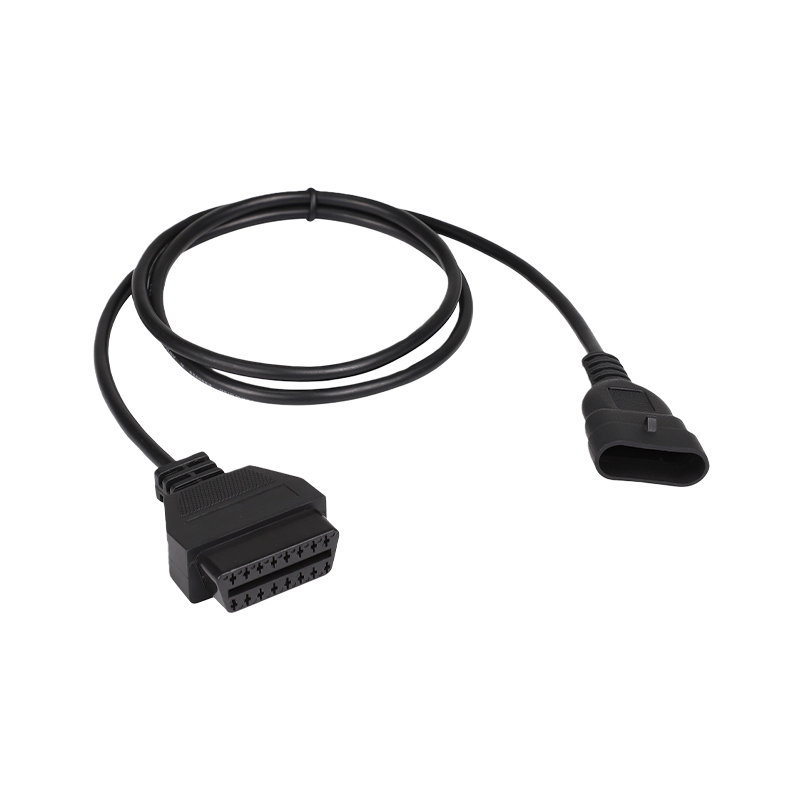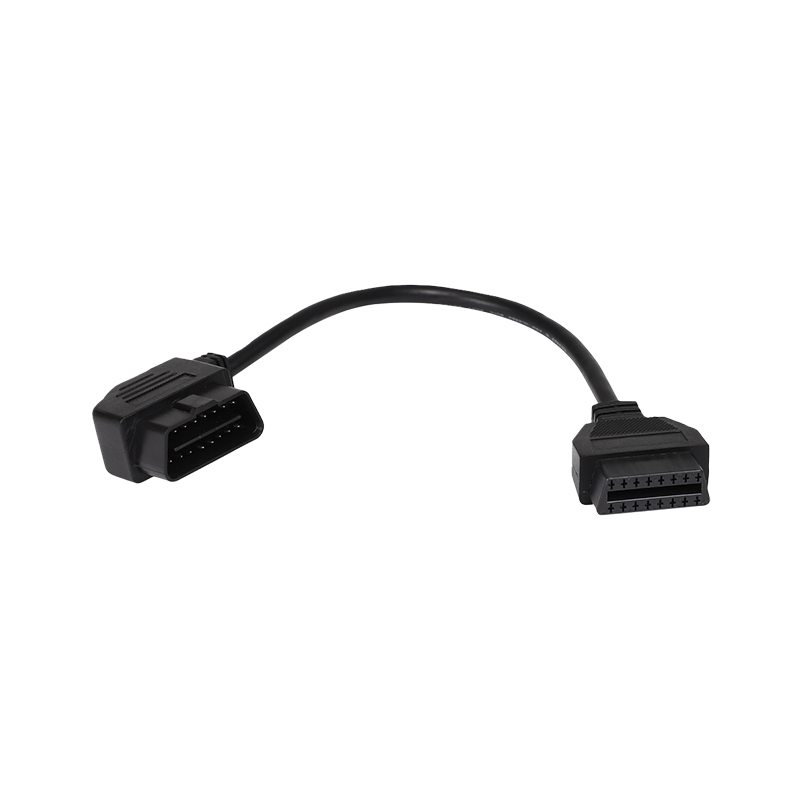How can a 9-pin diagnostic connector suppress electromagnetic interference in complex electromagnetic environments?
Release Time : 2025-11-07
In modern industry, automotive electronics, and aerospace, the operating environment of equipment is becoming increasingly complex. Strong electromagnetic interference, in particular, has become a key factor affecting system stability and data accuracy. As one of the commonly used standardized interfaces in automotive or industrial equipment, the 9-pin diagnostic connector must possess excellent electromagnetic interference resistance while undertaking fault diagnosis, parameter reading, and communication tasks.
1. Optimized Physical Structure and Material Selection
The interference resistance of a 9-pin diagnostic connector stems primarily from the rationality of its physical structure. High-quality connectors typically use a metal shell to enclose the internal plastic insulator and terminals, forming a natural Faraday cage effect, which effectively blocks the intrusion of external electromagnetic fields. Simultaneously, the metal shell also prevents external radiation interference from internal high-speed signal lines, achieving bidirectional shielding. Furthermore, the tight fit design of the connector's insertion and removal parts reduces gaps, preventing high-frequency electromagnetic waves from coupling into the system through the "antenna effect." In terms of materials, selecting highly conductive and corrosion-resistant metals not only improves shielding effectiveness but also enhances the connector's reliability in harsh environments.
2. Enhanced Shielding and Cable Design
The connector itself is only one part of the system; the shielding performance of its accompanying cable is equally crucial. In practical applications, 9-pin diagnostic cables typically employ a double-layer shielding structure: an inner aluminum foil shield to suppress high-frequency interference; and an outer braided copper mesh to provide low-frequency magnetic field shielding and enhance mechanical strength. This composite shielding structure covers a wider frequency range and significantly reduces common-mode noise. Simultaneously, the shielding layer must be grounded 360° around the circumference, achieving a low-impedance connection with the connector's metal shell to avoid shielding failure caused by a single-point grounding point ("pigtail"). High-quality cables also employ twisted-pair structures for critical signal lines, utilizing differential signals to cancel external interference and further improve the signal-to-noise ratio.
3. Scientific Grounding and Integrated Filtering Circuits
Good grounding is fundamental to EMI suppression. The metal shell of the 9-pin connector must be reliably connected to the equipment ground or vehicle ground via a low-inductance path to ensure that interference current can be quickly discharged without forming loops. Internally, EMI filtering circuits are often integrated into the diagnostic interface, such as adding TVS diodes or π-type filters between the power pins and ground to absorb transient surges and filter out high-frequency noise. For communication pins, common-mode chokes and bypass capacitors can be configured to suppress common-mode interference without affecting differential signal transmission. These small passive components can respond to interference within nanoseconds, protecting the backend ECU from damage.
4. Adherence to Standards and System-Level Co-design
International standards impose stringent requirements on the electromagnetic compatibility (EMC) of automotive electronic equipment. The 9-pin diagnostic connector includes indicators such as radiated emissions, conducted emissions, and immunity. Manufacturers must conduct simulation analysis and field verification during product development to ensure that limits are met within typical interference frequency bands such as 80 MHz–2.5 GHz. Furthermore, the connector's immunity also relies on the co-design of the entire vehicle or system—including proper wiring harness routing, avoiding parallel routing with high-voltage lines, and shortening signal loop area—to reduce coupling risks at the system level.
Faced with increasingly severe electromagnetic environment challenges, the 9-pin diagnostic connector is no longer a simple mechanical interface, but a critical EMC node integrating shielding, filtering, grounding, and structural optimization. Through multiple means such as metal shell shielding, twisted pair + double-layer shielded cables, scientific grounding strategies, and integrated filtering components, it can ensure the stability and accuracy of diagnostic communication under strong interference.
1. Optimized Physical Structure and Material Selection
The interference resistance of a 9-pin diagnostic connector stems primarily from the rationality of its physical structure. High-quality connectors typically use a metal shell to enclose the internal plastic insulator and terminals, forming a natural Faraday cage effect, which effectively blocks the intrusion of external electromagnetic fields. Simultaneously, the metal shell also prevents external radiation interference from internal high-speed signal lines, achieving bidirectional shielding. Furthermore, the tight fit design of the connector's insertion and removal parts reduces gaps, preventing high-frequency electromagnetic waves from coupling into the system through the "antenna effect." In terms of materials, selecting highly conductive and corrosion-resistant metals not only improves shielding effectiveness but also enhances the connector's reliability in harsh environments.
2. Enhanced Shielding and Cable Design
The connector itself is only one part of the system; the shielding performance of its accompanying cable is equally crucial. In practical applications, 9-pin diagnostic cables typically employ a double-layer shielding structure: an inner aluminum foil shield to suppress high-frequency interference; and an outer braided copper mesh to provide low-frequency magnetic field shielding and enhance mechanical strength. This composite shielding structure covers a wider frequency range and significantly reduces common-mode noise. Simultaneously, the shielding layer must be grounded 360° around the circumference, achieving a low-impedance connection with the connector's metal shell to avoid shielding failure caused by a single-point grounding point ("pigtail"). High-quality cables also employ twisted-pair structures for critical signal lines, utilizing differential signals to cancel external interference and further improve the signal-to-noise ratio.
3. Scientific Grounding and Integrated Filtering Circuits
Good grounding is fundamental to EMI suppression. The metal shell of the 9-pin connector must be reliably connected to the equipment ground or vehicle ground via a low-inductance path to ensure that interference current can be quickly discharged without forming loops. Internally, EMI filtering circuits are often integrated into the diagnostic interface, such as adding TVS diodes or π-type filters between the power pins and ground to absorb transient surges and filter out high-frequency noise. For communication pins, common-mode chokes and bypass capacitors can be configured to suppress common-mode interference without affecting differential signal transmission. These small passive components can respond to interference within nanoseconds, protecting the backend ECU from damage.
4. Adherence to Standards and System-Level Co-design
International standards impose stringent requirements on the electromagnetic compatibility (EMC) of automotive electronic equipment. The 9-pin diagnostic connector includes indicators such as radiated emissions, conducted emissions, and immunity. Manufacturers must conduct simulation analysis and field verification during product development to ensure that limits are met within typical interference frequency bands such as 80 MHz–2.5 GHz. Furthermore, the connector's immunity also relies on the co-design of the entire vehicle or system—including proper wiring harness routing, avoiding parallel routing with high-voltage lines, and shortening signal loop area—to reduce coupling risks at the system level.
Faced with increasingly severe electromagnetic environment challenges, the 9-pin diagnostic connector is no longer a simple mechanical interface, but a critical EMC node integrating shielding, filtering, grounding, and structural optimization. Through multiple means such as metal shell shielding, twisted pair + double-layer shielded cables, scientific grounding strategies, and integrated filtering components, it can ensure the stability and accuracy of diagnostic communication under strong interference.







